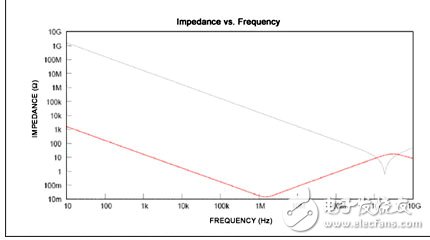Modern audio amplifier designs often overlook high-frequency RF issues, leaving them vulnerable in environments with strong radio frequency interference. When such amplifiers are exposed to RF signals, the carrier information can be demodulated into the audio band, causing unwanted noise and distortion.
A classic example is the GSM (Global System for Mobile Communications) network. GSM uses Time Division Multiple Access (TDMA), allowing multiple handsets to communicate with a base station simultaneously. The data transmission occurs at a burst rate of 217 Hz, creating an electric field modulated at this frequency—right within the audible range. Although the GSM signal operates between 800 MHz and 1900 MHz, the 217 Hz envelope remains constant, making it particularly problematic for audio systems.
To prevent this, the audio amplifier in a GSM phone must reject or block the 217 Hz envelope. The lead connecting the amplifier to the audio source acts like an antenna, especially when its length corresponds to a quarter of the RF wavelength. For a 900 MHz signal, that’s about 7.5 cm, and for 1900 MHz, it’s around 3.5 cm. If the lead is close to these lengths, it becomes highly sensitive to nearby RF signals, picking up strong interference.
As mobile phones become more widespread, the issue of RF interference on audio amplifiers has grown more significant. Both stereo headphone and speaker amplifiers need to avoid being affected by RF energy from the phone. While both can receive RF signals, headphone amplifiers face greater challenges due to lower signal amplitudes. Fortunately, there are several strategies to reduce the impact of RF noise on the audio system.
Option 1 - Integrate the Audio Amplifier into the Baseband IC
One approach to reducing RF sensitivity is to integrate the headphone amplifier directly into the baseband processor. This minimizes the length of the signal path, reducing the antenna effect and improving overall circuit integration. By eliminating the antenna-like behavior of long leads, RF interference is less likely to affect the audio signal.
However, integrated solutions often use low-cost headphone amplifiers that may compromise sound quality. These amplifiers typically operate on a single supply and have a DC bias at VDD/2, requiring DC-blocking capacitors. These capacitors take up space on the PCB and can degrade low-frequency response, leading to audio distortion. Additionally, placing sensitive analog components near noisy digital circuits increases the risk of noise contamination.
Option 2 - Improve Input and Power Wiring
To avoid the drawbacks of integrated solutions, using a dedicated headphone amplifier is recommended. Even if the amplifier isn’t specifically designed for RF suppression, careful PCB layout can significantly reduce RF sensitivity. Input leads are particularly vulnerable, so they should be shielded and kept as short as possible—ideally much shorter than a quarter of the RF wavelength at the target frequency.
Power lines can also act as antennas, picking up RF noise. Bypass capacitors are commonly used to filter power supply noise, but their inductance limits performance at higher frequencies. Combining a 1μF capacitor with a 10pF ceramic capacitor improves high-frequency bypassing, ensuring better noise suppression across the GSM band.

Figure 1. The amplifier's power cord picks up the RF signal.
Option 3 - Use an RF-Suppression Amplifier
While integration and layout improvements help, the simplest solution is to use a headphone amplifier designed to reject RF interference. The MAX9724, for instance, is engineered to minimize RF sensitivity without requiring special board design. This makes it ideal for cost-effective product development.
Testing shows that the MAX9724 performs far better than standard amplifiers in RF environments. In controlled tests, it demonstrated at least 39 dB better immunity to interference compared to conventional amplifiers. At the critical GSM frequency, the MAX9724 maintains a noise level below -70 dBV, effectively eliminating audible distortion.
In Conclusion
RF sensitivity is a crucial challenge for mobile audio amplifiers. While integrating the amplifier into the baseband processor helps, it often comes at the cost of audio quality. Two effective external approaches include:
- Shielding and shortening input leads to reduce RF coupling
- Choosing an amplifier with built-in RF suppression to minimize noise
In many cases, one of these techniques can significantly reduce RF interference. However, for the best results, it’s recommended to use an RF-suppressed headphone amplifier and carefully plan the PCB layout to ensure optimal performance in real-world conditions.
Brake Disc For TOYOTA
Toyota Brake Disc,Toyota Auto Brake Disc,Toyota Car Brake Disc,Toyota Automobile Brake Disc
Zhoushan Shenying Filter Manufacture Co., Ltd. , https://www.renkenfilter.com